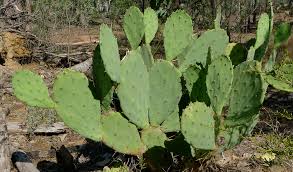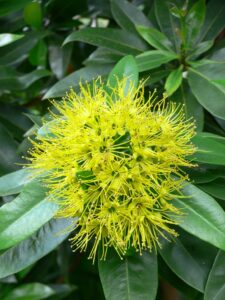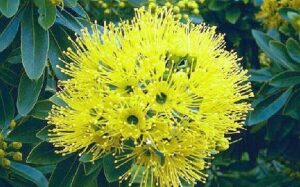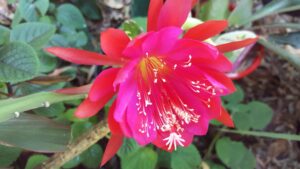The first plants of prickly pear were brought into Australia to start a cochineal dye industry. At that time, Spain had a world-wide monopoly on the important cochineal dye industry and the British Government was keen to set up its own source of supply within its dominion. The dye was derived from cochineal insects which thrived on the prickly pear.
The expensive, red colour denoted wealth, royalty and power and it was for example, the dye used at that time to colour the British soldiers’ red coats.
Captain Arthur Phillip’s First Fleet supplies included a collection of cochineal infested prickly pear plants from Brazil and other places on his way to establish the first white settlement at Botany Bay in 1788. There is no totally reliable information on the original introduction of common pest pear into Australia from the Americas however, it was first recorded as being cultivated for stock fodder in the Parramatta region in the early 1800’s. There is record of a pot plant being taken to Scone, NSW in 1839 where it was grown in a station garden with the manager planting it out with the idea that it would be a good standby for stock in a drought year. It has been recorded that a plant of common pear was taken from the Sydney area to Warwick, Qld in 1848 for use as a garden plant, with a strong recommendation that it would be a good fruiting and hedge plant.
The accommodating climate and general lack of natural enemies accounted for the pears amazing spread. Desperate measures were needed to halt this pest’s rampaging progress. After painstaking entomological research by the Commonwealth Prickly Pear Board, formed in 1919 to try to eradicate this infestation, the cactus moth was chosen as a biological control and as some would say, the prickly pear ‘was cactus’!
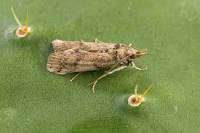
Cactus Moth (Cactoblastic cactorum) was chosen as a biological control for the dreadful prickly pear infestation in Australia. Ten million eggs were released in 1926, followed by a further 2.2 billion. The larvae blitzed the prickly pear so effectively that it is only a minor pest today. This is considered the most successful biological control of a pest plant in the world!

